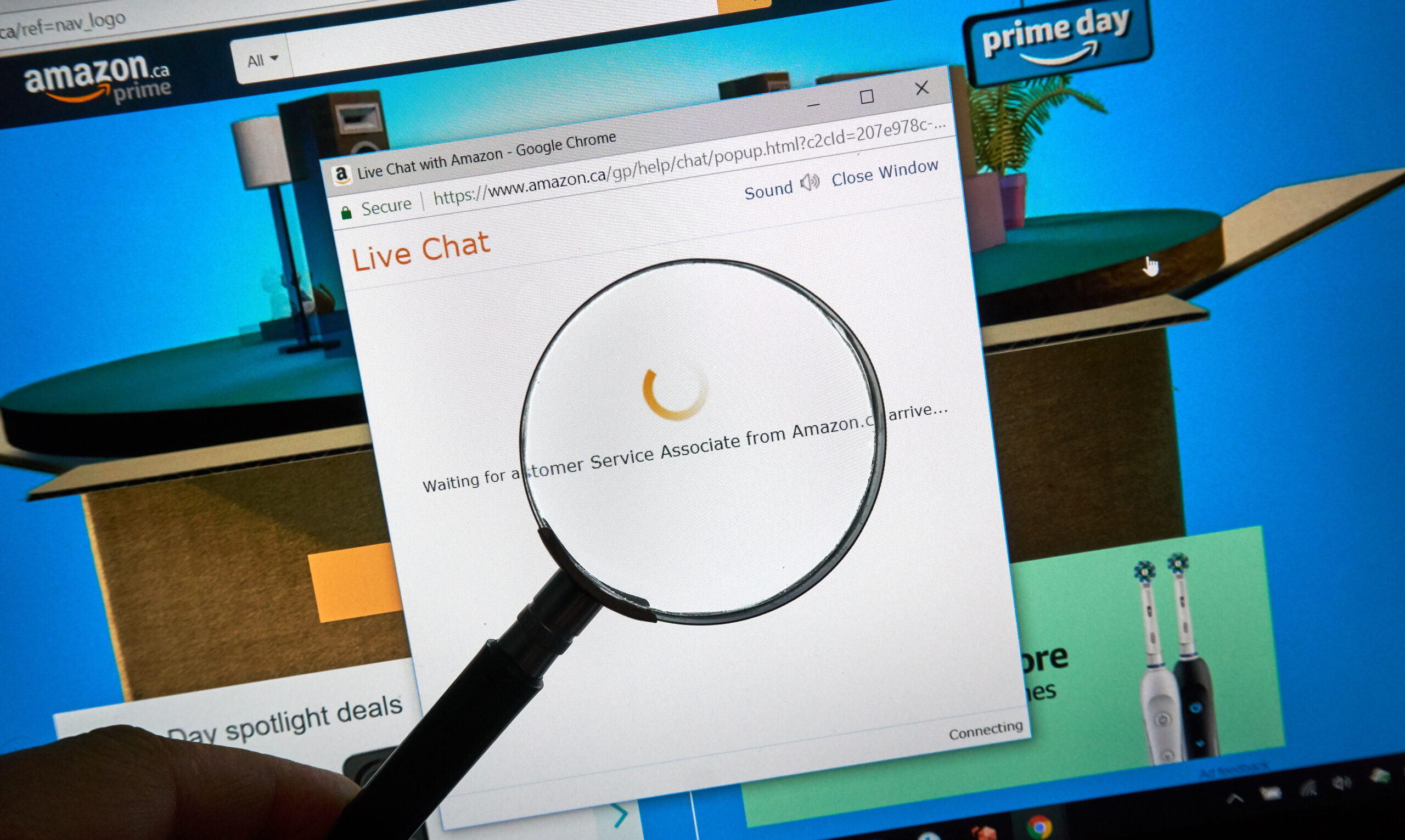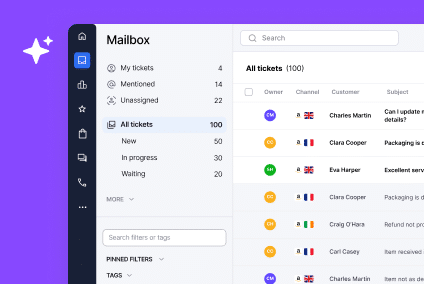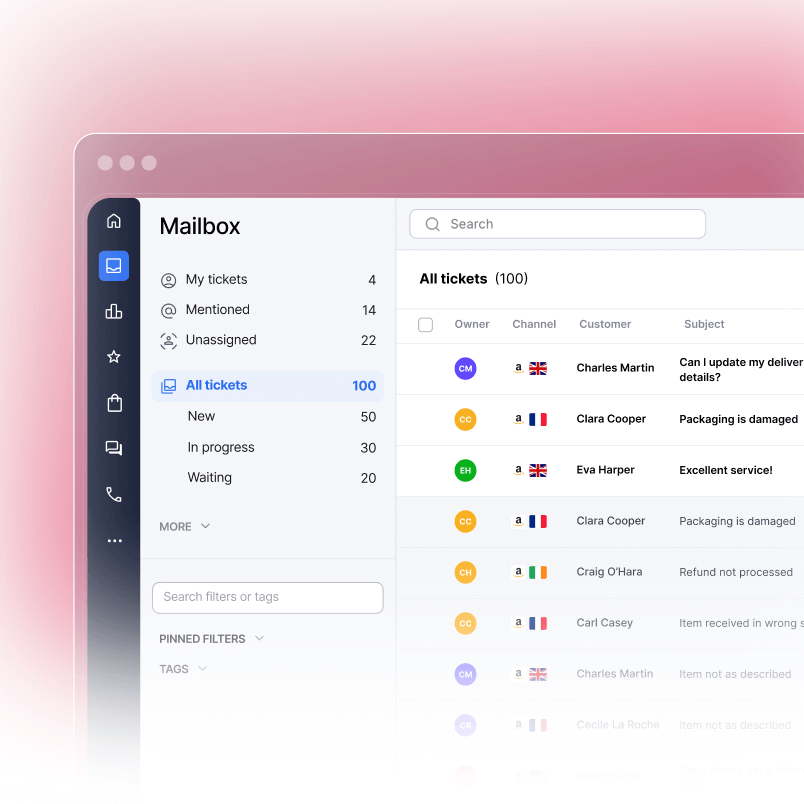Managing returns is one of the hardest parts of running an online business. When a customer asks for their money back, how you respond determines whether they become loyal or leave negative feedback. This guide shows you exactly how to handle returns efficiently, communicate clearly, and protect your seller reputation.
We’ll walk through ecommerce returns policies, the step-by-step process, customer communication best practices, and compliance rules that keep you safe on major platforms like Amazon, eBay, and Shopify.
How Do You Handle Ecommerce Returns Efficiently?
Efficient returns handling means three things work together: a clear policy, a smooth process, and consistent communication.
According to National Retail Federation research, the average ecommerce return rate reached 16.9% in 2024, meaning nearly 17 out of every 100 products sold were returned. This tells you something important: your returns process directly impacts sales and customer trust.
When you handle returns efficiently, you reduce refund disputes, lower chargebacks, and increase the chance of positive feedback. Even when something goes wrong, showing up quickly and resolving issues fairly changes how customers feel about your brand.
Here’s what efficient handling looks like:
- Published policy that’s easy to find and understand
- Response to return requests within 24 hours
- Refunds processed within 5 to 10 business days
- Clear communication at every step
- Documented records of all return interactions
Why Having a Clear Returns Policy Matters
Your returns policy is often the first legal agreement customers read. It sets expectations and protects both you and the buyer.
Research shows that 67% of shoppers read a store’s return policy before purchasing. With returns this common, customers expect a smooth experience. When your policy is unclear, support tickets pile up, and customers become frustrated before they even start the return.
Additionally, 84% of UK shoppers won’t purchase from a retailer again after a bad returns experience, underscoring how critical efficient handling is to customer loyalty.
A clear policy does four things:
Reduces support tickets by answering common questions upfront. This saves your team time and money. If customers know exactly what you accept and when, they won’t send confused messages.
Protects your business legally. A published policy makes it clear you’ve set terms, which helps in disputes. This is especially important on platforms like Amazon and eBay, where seller ratings impact visibility.
Builds customer confidence. When buyers see a fair, transparent policy, they trust you more. They’re more likely to complete the purchase.
Decreases chargebacks and disputes. When terms are clear from the start, customers are less likely to dispute charges or file complaints.
What Should Be in Your Ecommerce Returns Policy?
A strong returns policy covers these key elements:
Return Window State the exact number of days customers have to request a return. Most ecommerce businesses use 30 days, though some offer 60. Be specific: does the window start from order date or delivery date? According to data, 62.58% of online customers expect retailers to allow returns within 30 days of purchase, so this is the industry standard.
Condition Requirements Are items required to be unused and in original packaging? Can opened or used items be returned? State this clearly.
Shipping Costs Who pays for return shipping? Will you provide a prepaid label? If customers pay, will you reimburse them after receiving the item?
Refund Timeframe Once you receive the return, when will the refund be processed? Say „within 5 to 10 business days after receipt“ rather than vague language.
Exclusions What items cannot be returned? List them: customized items, final sale goods, hazardous materials, clearance products. Be explicit.
Damaged or Missing Items What happens if an item arrives damaged? Can customers return it for a replacement or refund? Include clear steps for reporting damage.
Health and Safety Items Certain items (used cosmetics, opened supplements, intimate products) have legal restrictions on returns. Follow local regulations and state these in your policy.
Process Instructions Give step-by-step instructions: where to request a return, how to print a label, where to ship the item, how to track the return.
Contact Information List how customers can reach you with return questions. Include email, phone, or a help form. Make support accessible.
The Step-by-Step Returns Process
A structured process prevents confusion and keeps returns moving.
Step 1: Customer Initiates Return Request The customer logs into their account and requests a return. They select a reason: item damaged, wrong size, changed mind, defective, or other.
On platforms like Amazon and eBay, this happens through the platform’s built-in system. If you sell direct from your site, your ecommerce platform (Shopify, BigCommerce, WordPress) should have a return form.
Within 24 hours, confirm receipt of their request via email.
Step 2: You Review and Approve Look at the order details and return reason. Does it fall within your return window? Is it an eligible item? Approve or deny the request within one business day.
If you deny it, explain why clearly and professionally. Reference your policy so the customer understands the reason.
Step 3: You Issue Return Label If approved, send a prepaid return shipping label (if applicable) or instructions for where to ship the item. Include:
Return authorization number Your business return address Tracking number for the return shipment Estimated delivery date to your warehouse
This tracking number is critical. You need proof that the item was shipped back and when it arrived.
Step 4: Customer Ships Item Back The customer packages the item and ships it using the label you provided. Encourage them to keep their tracking number for reference.
Step 5: You Receive and Inspect When the package arrives at your warehouse or returns address, inspect it immediately:
Is the item in the condition you required? Is it the correct item from the order? Does the tracking number match what you sent? Document everything with photos if possible.
Step 6: You Process Refund If the item meets your requirements, process the refund to the original payment method. Send a confirmation email with:
Return authorization number Refund amount Expected date of appearance in their account Order reference number
If the item doesn’t meet your requirements, contact the customer to explain why before refusing the refund.
Step 7: You Close the Loop Once the refund is processed, follow up with a brief email asking if they need anything else. If something went wrong, ask if there’s anything you could have done better.
How to Communicate With Customers During Returns
Communication during a return makes or breaks the customer experience. Here’s what to do.
Be Fast Respond to return requests within 24 hours. Speed signals that you take the issue seriously. Customers waiting days for a response assume you don’t care, and they’ll leave negative feedback.
Be Clear Use simple language. Don’t hide your reasoning or make customers guess what’s next. If you approve a return, say „Your return is approved. Here’s your label. Here’s where to ship it. Here’s when to expect your refund.“
Be Human Avoid robotic templates that feel cold. You can follow a process without sounding like a machine. Personalizing messages (using the customer’s name, referencing their specific order) shows you care.
Use Empathy in Your Tone When a customer returns an item, something didn’t work for them. Acknowledge that. A message like „We’re sorry this didn’t work out, but we’re happy to help“ goes further than „Return initiated. Awaiting shipment.“
Provide Tracking Always include a tracking number for the return shipment. Customers want to know where their package is, just like with original orders.
Document Everything Save copies of every message, return authorization, and inspection note. If a dispute arises, documentation protects you. Plus, having a record helps you spot patterns (like a specific item type that always gets returned).
Don’t Ask for Positive Feedback Never ask customers to remove negative feedback or leave positive reviews after a return. This violates platform policies on Amazon and most marketplaces. Research from eDesk shows that sellers who use negative feedback as a learning opportunity rather than fighting it actually improve their ratings faster over time. Your communication should be helpful and professional, not manipulative.
Return Policies Across Major Platforms
Different platforms have different rules. Understand the requirements for where you sell.
Amazon Fulfillment by Amazon (FBA) Amazon handles returns for you. Their standard return window is 30 days. Items must be unopened and in resalable condition. Amazon covers return shipping for most items. You’re responsible for items damaged by the customer or that don’t meet their condition rules.
Learn more about FBA specifics in the guide on managing Amazon FBA shipping and returns.
Amazon Seller Fulfilled You handle returns yourself. You can set your own return window (30 days is recommended). You decide if customers pay for return shipping or if you do. Be consistent with your policy.
Use the Amazon message center or an eDesk integration to communicate with buyers about returns. This keeps all conversations in one place and follows platform rules.
eBay eBay requires a minimum 14-day return window. For most items, the buyer pays return shipping unless the item is significantly not as described. You have up to three business days to respond to return requests.
Shopify Stores You set your own policy. Most Shopify stores offer 30 days with free return shipping to stay competitive. Shopify’s app ecosystem includes return management tools that automate the process.
BigCommerce Stores Like Shopify, you control the policy. Many tools integrate with BigCommerce to handle returns at scale.
WooCommerce and WordPress If you sell through WordPress, plugins manage returns. WooCommerce has native return functionality that you can customize.
The key rule across all platforms: whatever policy you publish, you must follow it consistently. Inconsistency leads to chargebacks, refund disputes, and negative feedback.
Common Mistakes That Damage Your Seller Rating
Watch out for these errors that cause customers to leave negative feedback:
- Unclear Policies Customers can’t find your policy or don’t understand it. Result: they contact support for basic questions, get frustrated, and leave bad reviews. Publish your policy where customers can find it easily and write it in simple language.
- Slow Responses You don’t reply to return requests for days. Customers assume you’re ignoring them. Always respond within 24 hours, even if your response is „We received your request and will review it by tomorrow.“ According to eDesk research on customer service statistics, 73% of customers expect a response within 24 hours. Missing this window tanks your ratings.
Additionally, the cost to process a return can be anywhere from 20% to 65% of the item’s original value, so fast resolution protects your bottom line.
- Overcomplicating the Process Asking for lengthy videos, extensive photos, or multiple email confirmations frustrates customers. Keep the return process simple.
- Refunding Too Slowly You receive the item but take two weeks to process the refund. Customers check their account daily and lose patience. Process refunds within two business days of receiving the return.
- Not Following Platform Rules Asking for positive feedback after resolving a return or offering incentives to remove negative reviews violates platform policy. These actions lead to account warnings or suspension.
- Avoiding Contact A customer has a problem with their return, and you don’t respond to follow-up messages. Silence feels like rejection. Stay engaged throughout the entire return process.
- Blaming the Customer Even when a customer’s claim seems unfair, avoid accusatory language. „You clearly damaged this“ or „This is obviously used“ puts them on the defensive. Stay professional and neutral.
Better approach: „We received the item and noticed some wear. Let’s discuss this to find a solution.“
Final Thoughts
Your returns policy and process directly impact your seller rating, customer lifetime value, and bottom line. The best ecommerce returns policies are simple, fair, and clearly communicated.
Start by writing a policy that balances your business needs with customer expectations. Then build a process that moves returns quickly. Finally, use communication that’s fast, clear, and human.
When customers feel respected during a return, even a negative experience becomes a chance to show your professionalism. Many businesses recover customer loyalty after handling returns well.
The investment in a solid returns system pays off in higher ratings, repeat customers, and fewer refund disputes. Use this guide as your roadmap to get it right.
FAQs
What is the standard ecommerce returns policy timeframe?
Most ecommerce businesses offer 30 days for returns. Some offer 60 days for seasonal sales or to stay competitive. Longer windows (45 to 60 days) increase customer confidence but also increase return rates. Choose based on your industry and business model.
Can I refuse a return if the customer changed their mind?
Yes, if it’s outside your return window or if the item is used or damaged beyond normal wear. Your published policy sets these rules. Always state them clearly so customers know in advance.
Who should pay for return shipping?
This depends on your business model and the return reason. If the item arrived damaged or was misrepresented, you should cover return shipping. If the customer changed their mind, many sellers ask the customer to pay. Be consistent with your policy.
How do I reduce return rates?
Better product descriptions reduce returns caused by unmet expectations. Clear product photos from multiple angles help. Detailed size guides for clothing are essential. Use customer reviews to understand common complaints and address them.
What do I do if a customer claims they shipped the item back but I never received it?
Ask for tracking proof. If they provide a tracking number showing delivery to your address, investigate whether it was lost in your warehouse. If the tracking shows it wasn’t delivered, the customer’s shipping carrier is at fault. Typically, the customer filed with the carrier’s insurance. Suggest they open a claim.
Should I contact customers after processing a refund?
Yes, send a brief confirmation email. Include the refund amount, expected timing, and order reference. This closes the loop and gives customers confidence the refund is real. Keep it brief and professional.
Can I ask customers to leave positive feedback after a return?
No. This violates policies on Amazon, eBay, and most platforms. You’re also not allowed to offer incentives (discounts, vouchers) to remove negative reviews. Focus on resolving the return well and let your actions speak for themselves.
What documentation should I keep from returns?
Save all return authorization numbers, tracking numbers, inspection photos, customer emails, and refund confirmations. Keep these for at least one year. If a customer disputes the refund, this documentation protects you and provides proof that you followed your policy.




